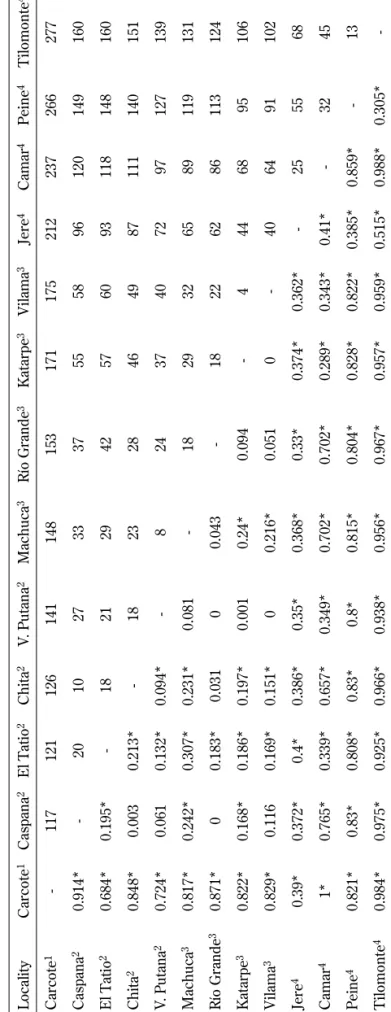Relación entre la estructura genética del sapo andino Rhinella spinulosa (Anura: Bufonidae) y el paisaje del norte de Chile (21° 24° S)
Texto completo
Figure




Documento similar
In Figure 6, right, we plot the three neutrino components when the Sun is 45 ° below the horizon (notice that the fluxes produced by the partial shadow and by the solar neutrons
Considering that multiple ML models are available at the ED, and a powerful ML model is available at the ES, we formulate a general assignment problem with the objective of
Walking from the hotel down to the IAC will take you 2025 minutes. Alternatively, you can take
Condor Chimera
Reduced model item parameters are estimated at the item level (i.e., one item at a time) rather than at the test level (i.e., all the items in the test simultaneously) following
At the same time, all shell lines present emission at ∼3 km s −1 centred at the core of the CS features, and two variable absorption minima at both sides of the emission;
Considering this, the aim of this study is to examine notions about participatory methodologies among elementary and secondary school teachers in the Biobío Region of Chile at
In agreement with this idea, the sequences of the virus clones isolated from evolved populations at intermediate stages showed a trend of U3402C and U3784C being present in
